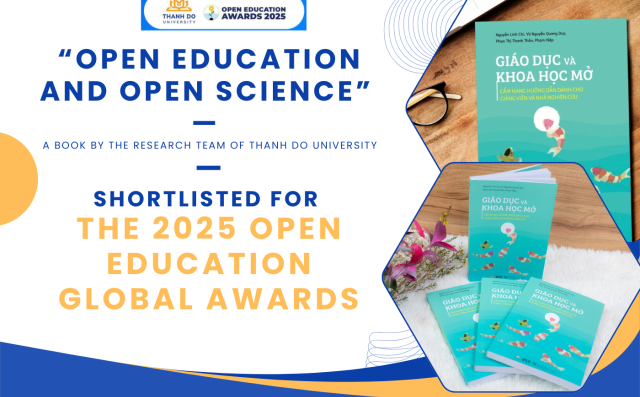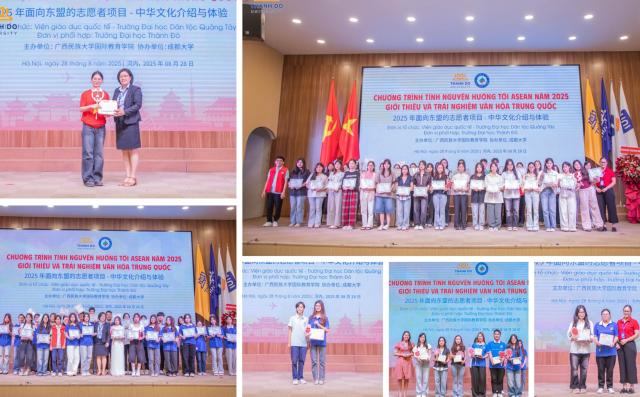
NATURAL COSMETICS AND PHARMACEUTICALS – EXPLORING TRENDS WITH TDD PHARMACY STUDENTS
Share
On the Afternoon of August 29, Thanh Do University’s Institute of Medicine and Pharmacy Successfully Hosted the Scientific seminar “Development of Natural Pharmaceuticals and Cosmetics: Sustainable Innovation in Health Care.”
The seminar offered an open forum for discussion and provided updates on both domestic and international trends in research, production, and development of natural pharmaceuticals and cosmetics.
In the quest for sustainable and human-friendly health solutions, natural pharmaceutical and cosmetic products are increasingly demonstrating their vital role in modern life. The valuable benefits that nature provides continually inspire highly applicable innovations in these fields.
Recognizing this significance, the Institute of Medicine and Pharmacy at Thanh Do University organized the scientific seminar under the theme: “Development of Natural Pharmaceuticals and Cosmetics: Sustainable Innovation in Health Care.” The seminar welcomed contributions from researchers and faculty members within the Institute. Beyond its academic nature, the event served as a knowledge-sharing platform, fostering collaboration among lecturers, students, and trainees, and promoting a research-oriented mindset connected with real-world applications.
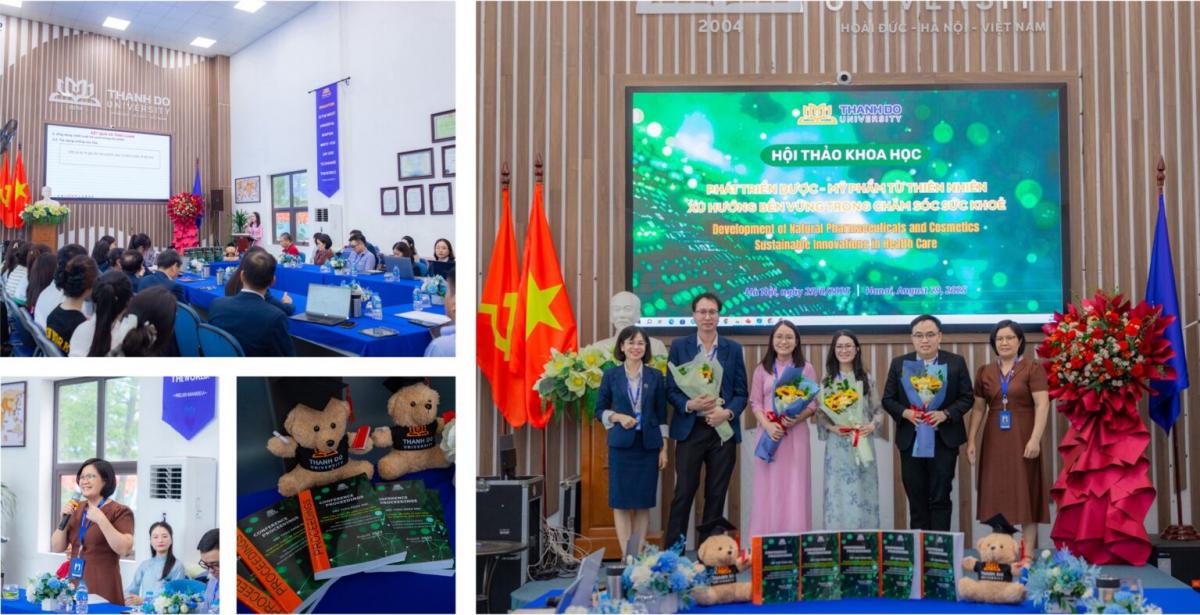
Scientific seminar: “Development of Natural Pharmaceuticals and Cosmetics: Sustainable Innovation in Health Care.”
At the seminar, research groups and projects were presented through a series of papers, focusing on three major topics: the application of medicinal plants in healthcare, trends in cosmetic development, and directions for commercialization of scientific research products.
Application of Green Tea Extract in Cosmetics
The first presentation explored the antioxidant, antibacterial, and skin-soothing properties of green tea extract. While green tea is a familiar part of daily life in Vietnam, its application in cosmetics offers the potential for developing natural, skin-friendly, and safe beauty products. The paper highlighted key compounds such as catechins and EGCG, analyzing their roles in preventing aging and protecting skin against UV damage. This scientific foundation provides opportunities for cosmetic enterprises to research and commercialize “green” products, a trend that is increasingly popular in the market.
Modern Formulation of Traditional An Nhan Duoc Hang Thang Medicine
The second presentation emphasized the integration of traditional medical knowledge with modern pharmaceutical technology. The An Nhan Duoc Hang Thang, a family herbal remedy, has proven effective across generations. However, limitations of traditional dosage forms, such as storage difficulties and cumbersome usage, necessitated innovation. Transforming the remedy into modern formats like tablets, capsules, and syrups enhances convenience, storage, and standardization, marking a significant step toward aligning traditional medicine with international standards while preserving its cultural value.

Potential Application of Artemisia vulgaris L. in Natural Pharmaceuticals and Cosmetics: In-Vitro and In-Vivo Overview
The third presentation provided a comprehensive scientific review, analyzing in-vitro and in-vivo results related to Artemisia vulgaris L. (mugwort). Known for its anti-inflammatory, antibacterial, and skin-soothing properties, mugwort is emerging as a promising ingredient for both pharmaceuticals and cosmetics. This study is especially significant in confirming the safety and efficacy of the plant, paving the way for high-value, commercially viable natural products. The paper also suggested future research directions to optimize extraction processes and bioactive potential, transforming traditional herbal knowledge into industrial applications.
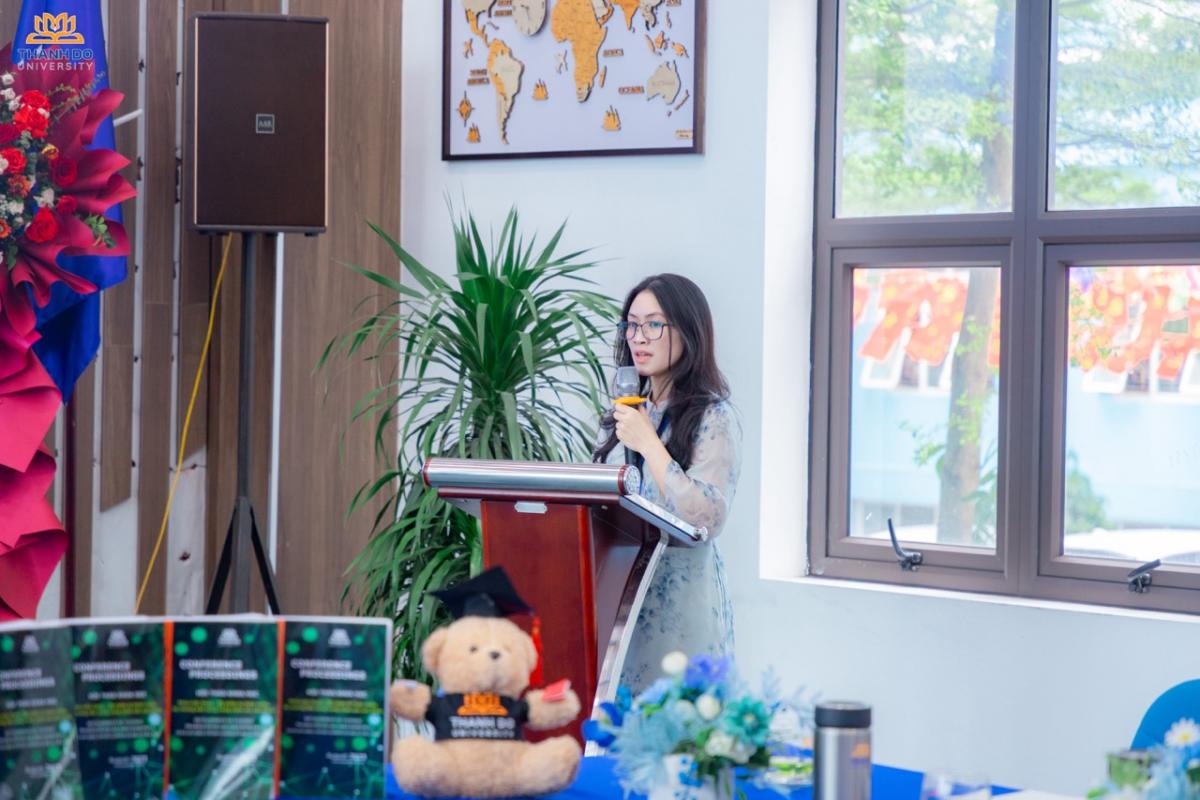
Application of Traditional Medicinal Plants in Fever Management
The final presentation addressed a practical healthcare issue: managing fever with traditional medicinal plants. Combining traditional and modern medical perspectives, the research summarized the efficacy of commonly used herbs in reducing fever, inflammation, and enhancing immunity. Notably, the study compared the mechanisms of traditional remedies with synthetic active compounds, demonstrating their potential as alternative or complementary treatments. This represents a promising direction amid growing demand for safe, natural, and low-side-effect health products.
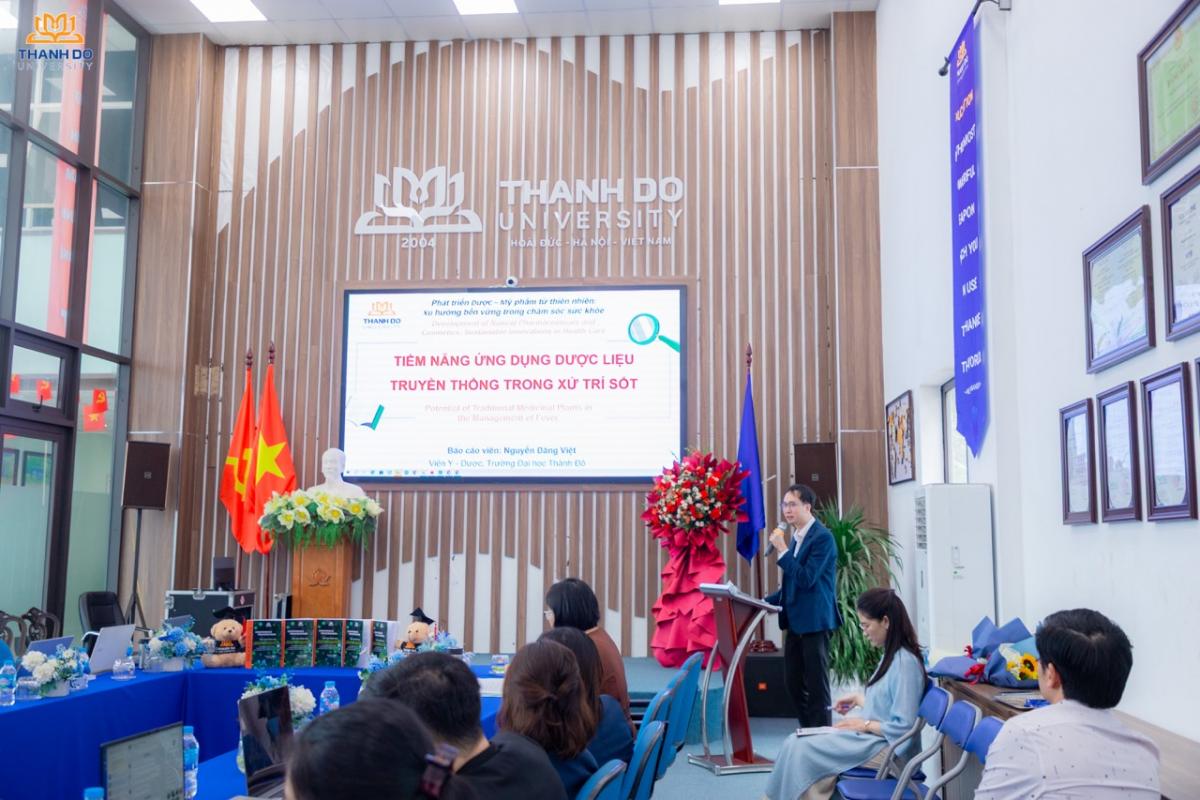
The presentations not only enriched scientific knowledge for faculty and students but also fostered connections between research and application, bridging the gap between the university and industry. From green tea and mugwort to family herbal remedies, all highlighted the hidden potential of natural ingredients when developed using modern approaches. This underscores Thanh Do University’s persistent commitment to integrating education, research, and practical application.
Beyond professional content, the seminar encouraged participants to engage in discussions, expand creative thinking, and explore new directions in healthcare and beauty sectors. The interaction among lecturers, students, and researchers created an open academic environment, stimulating innovation and a shared commitment to contributing to the community.
Recent news

Event
COLLABORATION WITH KUNSHAN UNIVERSITY OF SCIENCE AND TECHNOLOGY (TAIWAN) – EXPANDING INTERNATIONAL SCHOLARSHIP AND EMPLOYMENT OPPORTUNITIES FOR STUDENTS
04/11/2025

News
EMPOWERING FUTURE EDUCATORS: REK INSTITUTE AND HANOI METROPOLITAN UNIVERSITY ORGANIZE MICROLEARNING RESEARCH WORKSHOP
04/11/2025

